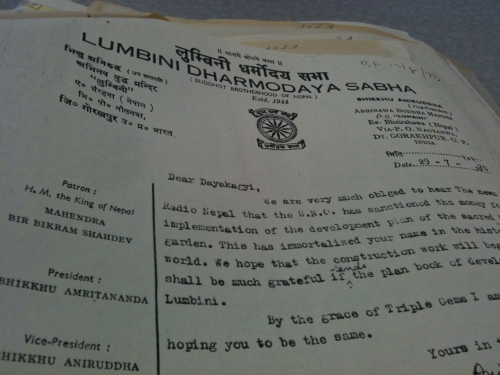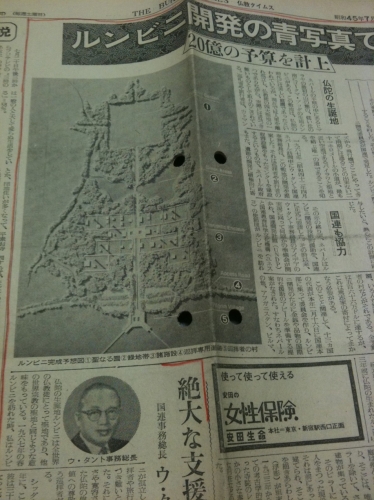
At the request of Dr. Christoph Cueppers—German Tibetologist, director of the Lumbini International Research Institute, and friend—I went yesterday to the UN Archives and Records Management to sift through old documentation on the UN’s role in the early days of Lumbini’s development.
“It would be very very helpful indeed if you could get some documentation of the early days of the Lumbini,” he wrote, “and the international commitment. Photos, exchange of notes, whatever is there is of interest. Also the assignment of the Master Plan to Kenzo Tange.”
Most of what I looked through wasn’t very juicy—formal letters requesting financial support, thank you notes. etc.—but I loved it. For me, touching history is an electric, life-affirming activity. This is our collective heritage! Isn’t it wild that this is our collective heritage?
Here are a couple photographs of the correspondence I dug through.
This to former UN General Secretary U Thant from Bhikkhu Aniruddha, one of the few monks from Lumbini involved in early development. The best line? “This has immortalized your name in the history of the world.”

An early news clipping on the plan to develop Lumbini into an international Buddhist pilgrimage site.
More on Lumbini’s early days soon.
Thank you for subscribing to Tricycle! As a nonprofit, we depend on readers like you to keep Buddhist teachings and practices widely available.